Driving The Alaska Highway

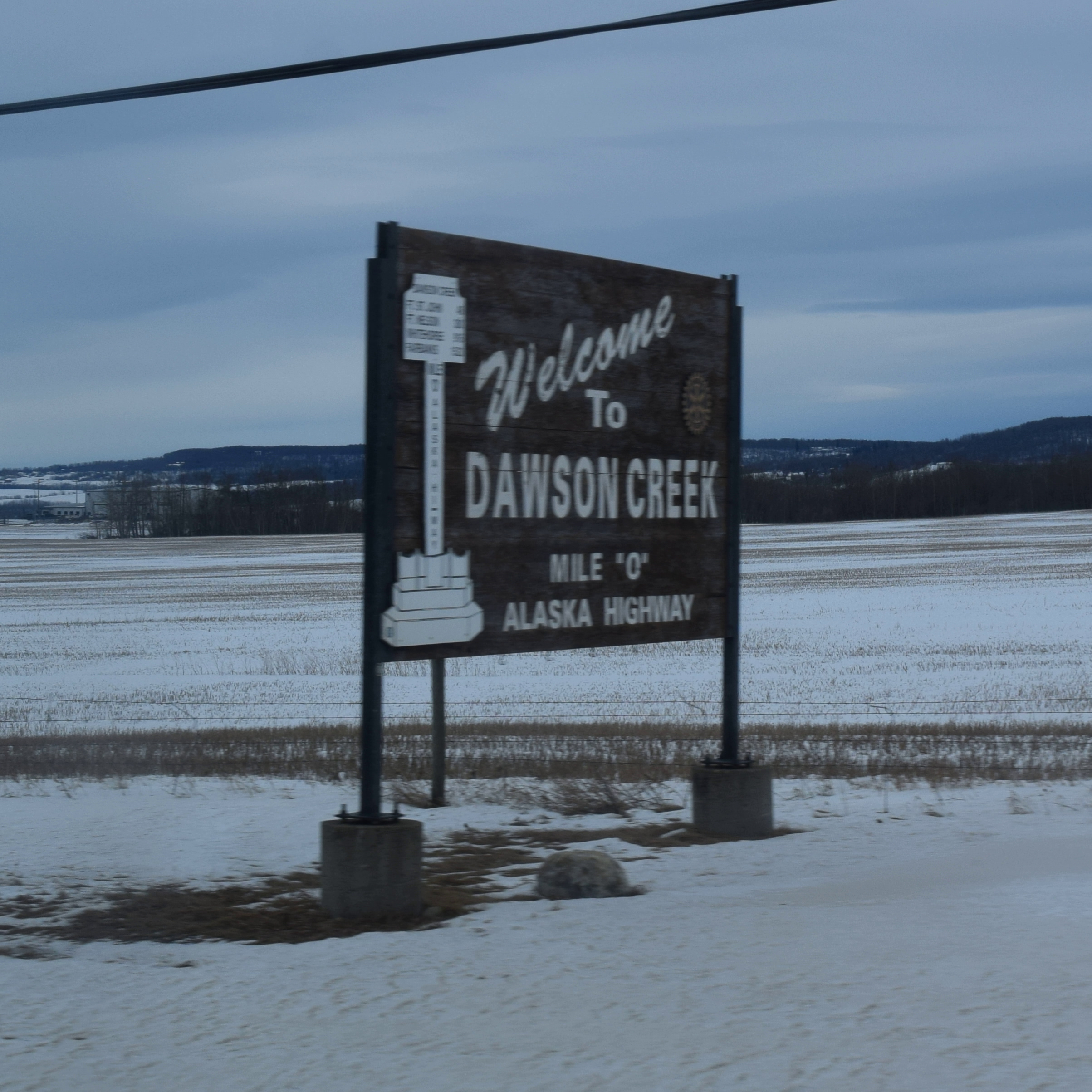
Driving the Alcan or Alaska Highway is definitely a once in a lifetime opportunity that most people never have a chance or the means to do. The Alaska Highway starts at Dawson Creek in British Columbia and ends in Fairbanks Alaska 1,486 miles later. There are only two ways to get your vehicles to Alaska from the lower 48 and that is to either ship them for big dollars or drive the Alaska Highway. The shipping companies wanted about $7,000 to barge a truck and trailer, the ferry wanted over $6,000, and it cost about $1,500 in fuel to drive so that whittled our options down to only one in a short order. We have two diesel trucks, a car trailer, and a 32’ camp trailer so driving was the only option given those prices.
Our preparations began well in advance with getting all of our vehicles winterized for the sub-zero temperatures that we would encounter at the end of the Alaska and Yukon winters. This also included our quads and Gator as they would see the same temperatures. We also had to get a folder put together with birth certificates, items to declare at the borders, preparing to show we were essential travelers moving to Alaska (Because we are unvaxxed pure bloods with no RNA injections), and route planning. The trip would take several days as we had over 2,600 miles to drive out of which about 1,900 miles would be snow and ice-covered roads.
We reached the Sumas/Abbotsford border and gave them our paperwork and passports. The initial border agent did not like unclean Americans and must have hated guns as we were all questioned before we were pulled aside for an hour and a half search. I brought 200 rounds or ammo, which is well below the 5,000 round limit, so he wanted to know where the guns were. We had shipping paperwork from Alaska Gun Shipping showing that we had shipped them all, but he was convinced that we were smuggling guns and repeatedly told all of us that we would be arrested and put in jail if they found a gun period. The searching agents were more reasonable and friendly luckily so it was only one of them who was not happy to see unclean American gunowners coming into their country.
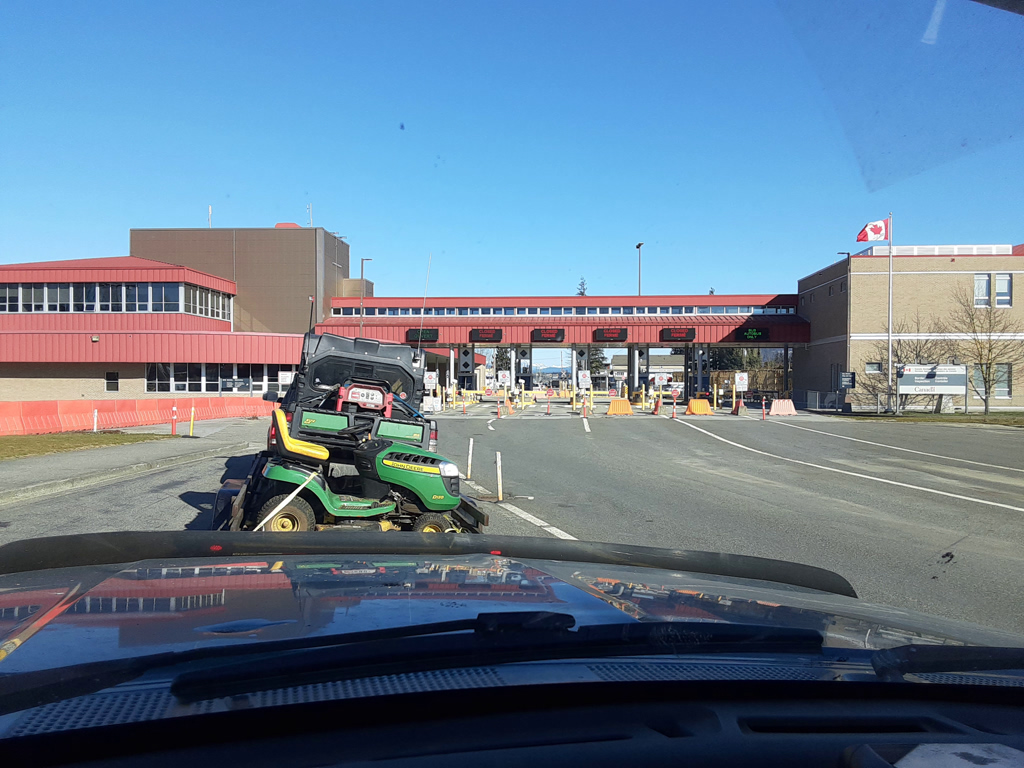
We were given travel papers and vehicle placards which almost seemed reminiscent of Nazi Germany and were told several times that we would be fined and arrested if we left the highway or did any “Touristy things”. Our license plates were also flagged for restricted travel in the Canadian department of licensing system so that any officer could easily check our status. Additionally, we were banned from restaurants and stores so that actually helped us save money because we could not stop anywhere to spend it. We knew that would be the case so we stocked extra food in our camp trailer for the trip so we could make meals ourselves. Needless to say, we did not get any photos of the tourist spots unless we could get them from the roadway because we did not want to end up in jail over a photo opportunity.
The trip through the mountains by Hope British Columbia was spectacular with beautiful scenery everywhere. Canada has lots of rest areas and garbage cans along the road so they are way better than the United States in that aspect. We had two cats and a dog with us along with our daughter so these rest stops were much appreciated. We made it to Clinton British Columbia the first night as we were delayed two hours at the border crossing. We found an RV park to camp in as the border agents said RV parks are OK for us to use since we had a self-contained trailer. The people became more normal and less frightened of us as we got away from the Vancouver British Columbia area so we got less of the unclean lepper treatment. The lepper treatment eventually went away as we reached the Yukon so expect to be treated like a second-class person in most of the bigger cities through British Columbia. Needless to say, not all the people did that, but most would tell you about their 81% vaccination rate and how no Americans should be allowed into Canada period.
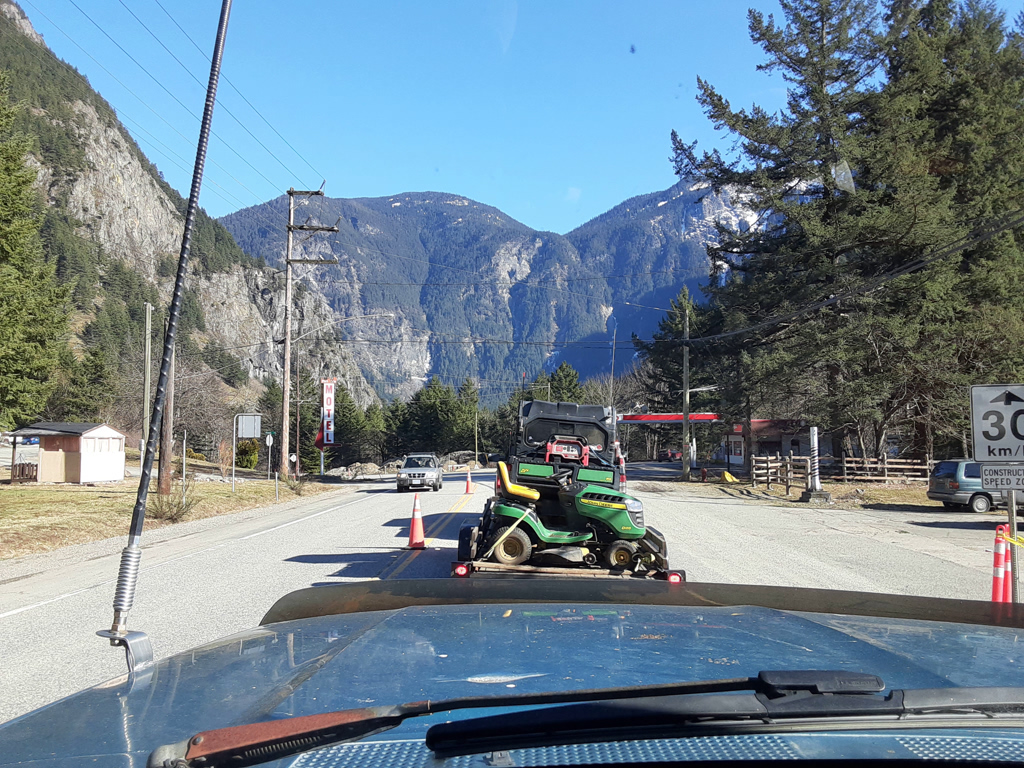
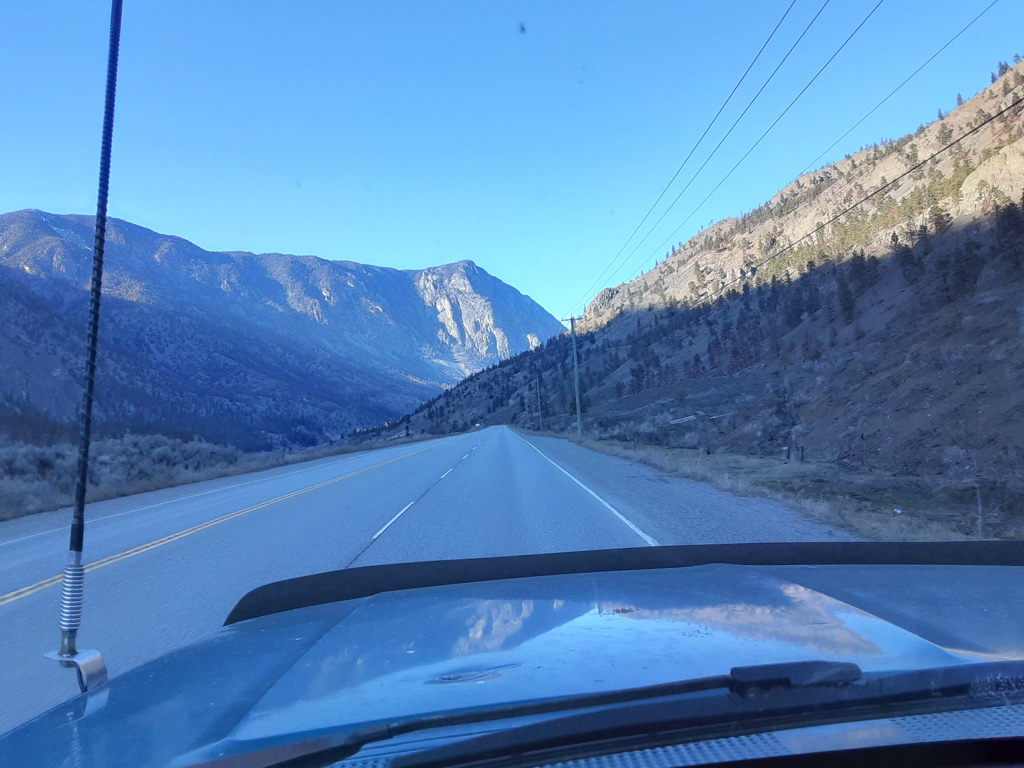
We saw many places that we really wanted to check out, but were banned from unfortunately so we did not. Our estimates were that we saved about $2,000 from not eating out or buying souvenirs so that did help offset the sky-high fuel prices. I doubt the businesses appreciated us saving money from not stopping and some of the restaurants looked pretty good so we didn’t like it either. I don’t doubt that many of them will go under from the lack of income just as way too many businesses in Washington state did due to King Inslee’s mandatory small business closures.
The second day of our journey led us to Prince George which was the largest city that we went through on our way across Canada. It has lots of stores and things to do if you have a vaccine passport and can actually stop at places. This was also the first available stop for us to turn our required 24-hour Covid tests in so we did that on the way through. The tests were supposed to be witnessed either on video or on the phone, but we had zero cell or data service in Canada so the best we could do was to take the tests and drop them off. We did stop by a RCMP outpost to see if they could help by letting us use a phone, but they said no way so we ran out of options. Payphones were another option, but they are extinct in Canada too so that didn’t work. We continued past Prince George as there were no RV parks open there and we did not feel that all of our stuff was safe at any motel so we continued on. Night was approaching so we found a large vacant rest area and setup camp for the night. We kept minimal water in the RV storage tanks as we knew colder weather was ahead of us. Our trailer has tank heaters and is a cold weather trailer or we would not have chanced the water.
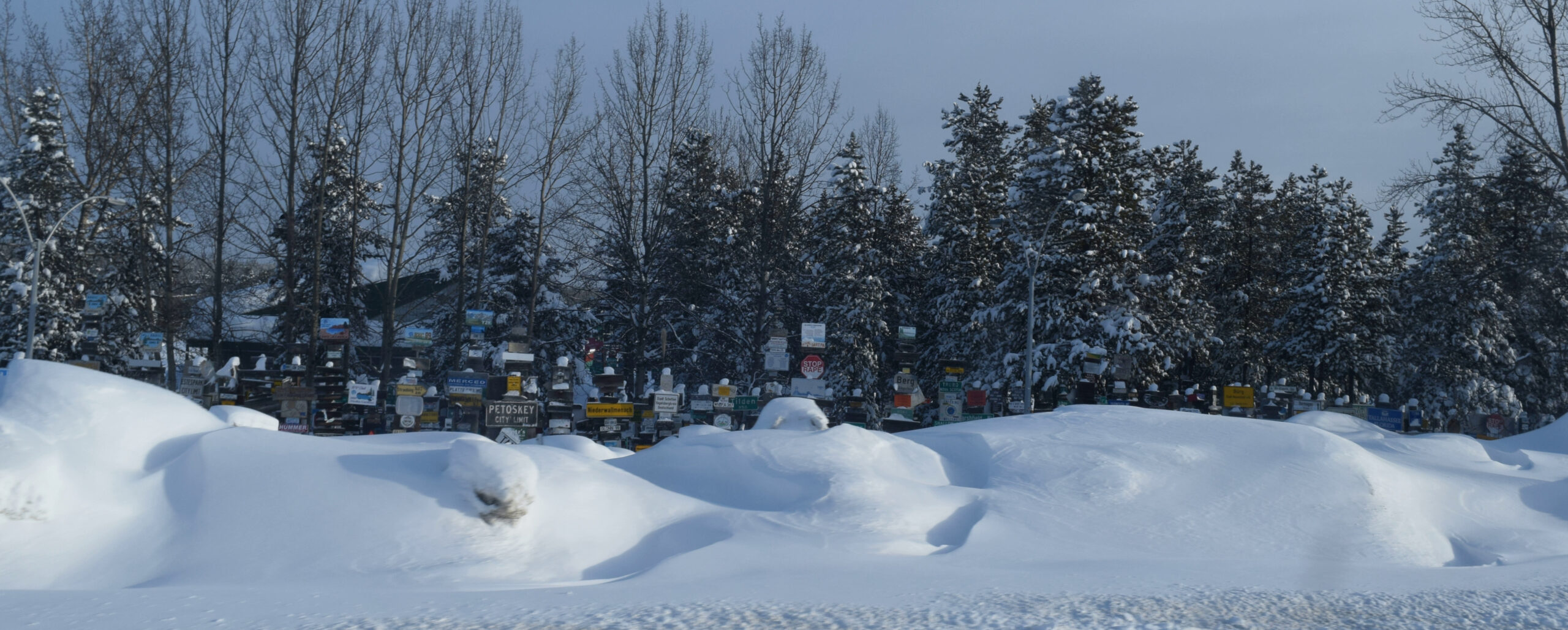
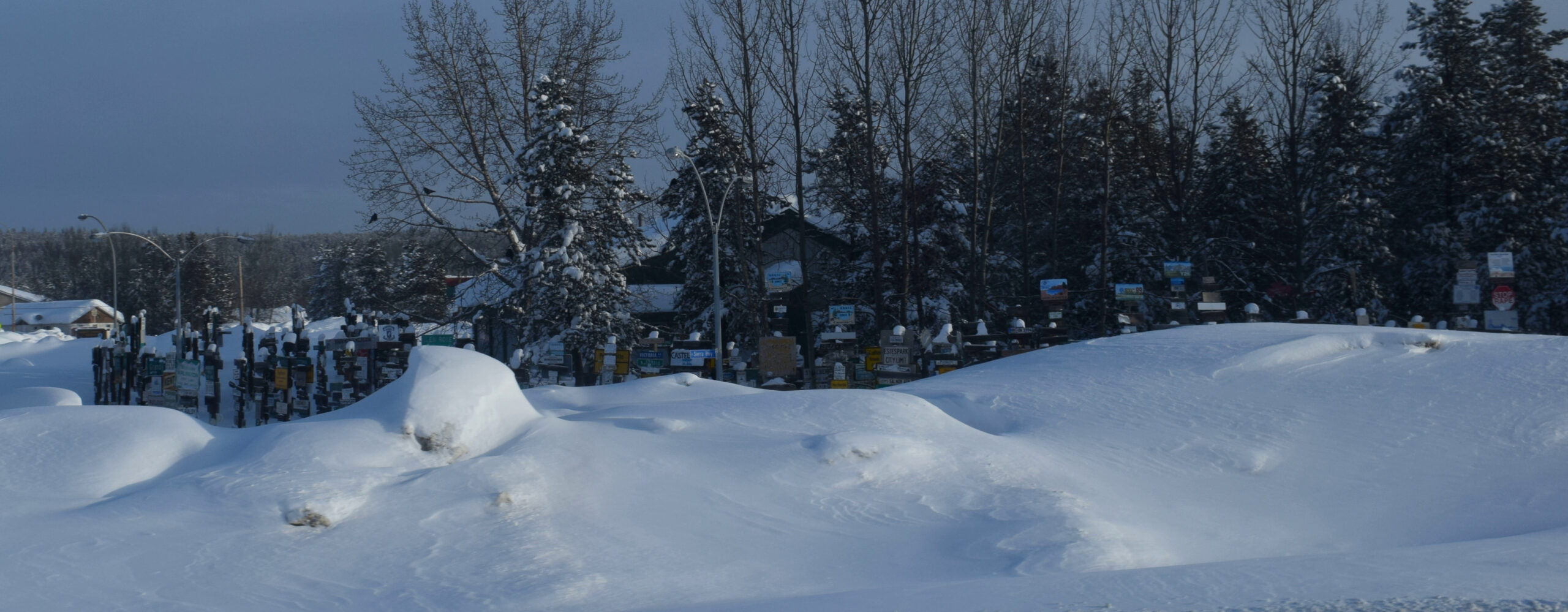
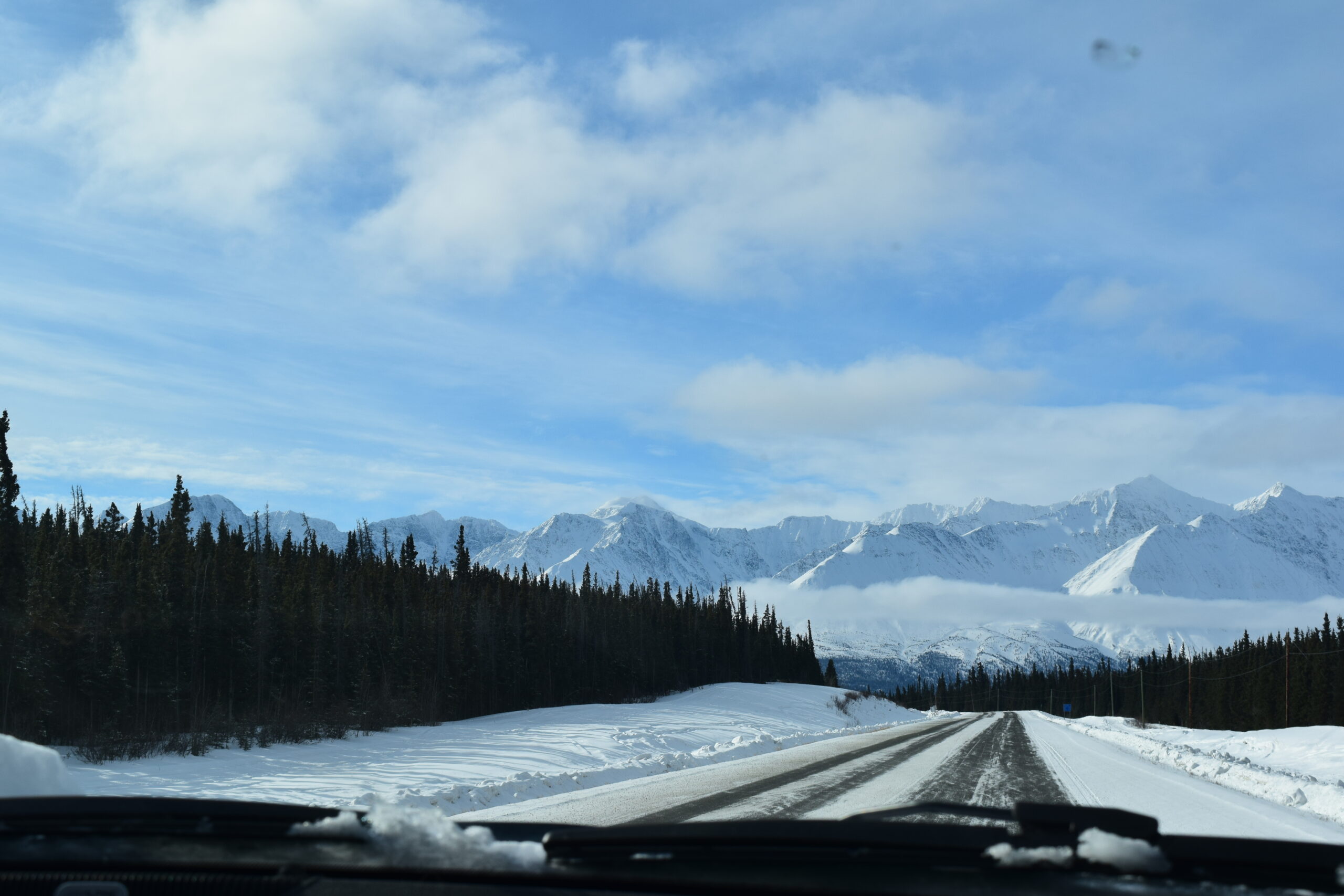
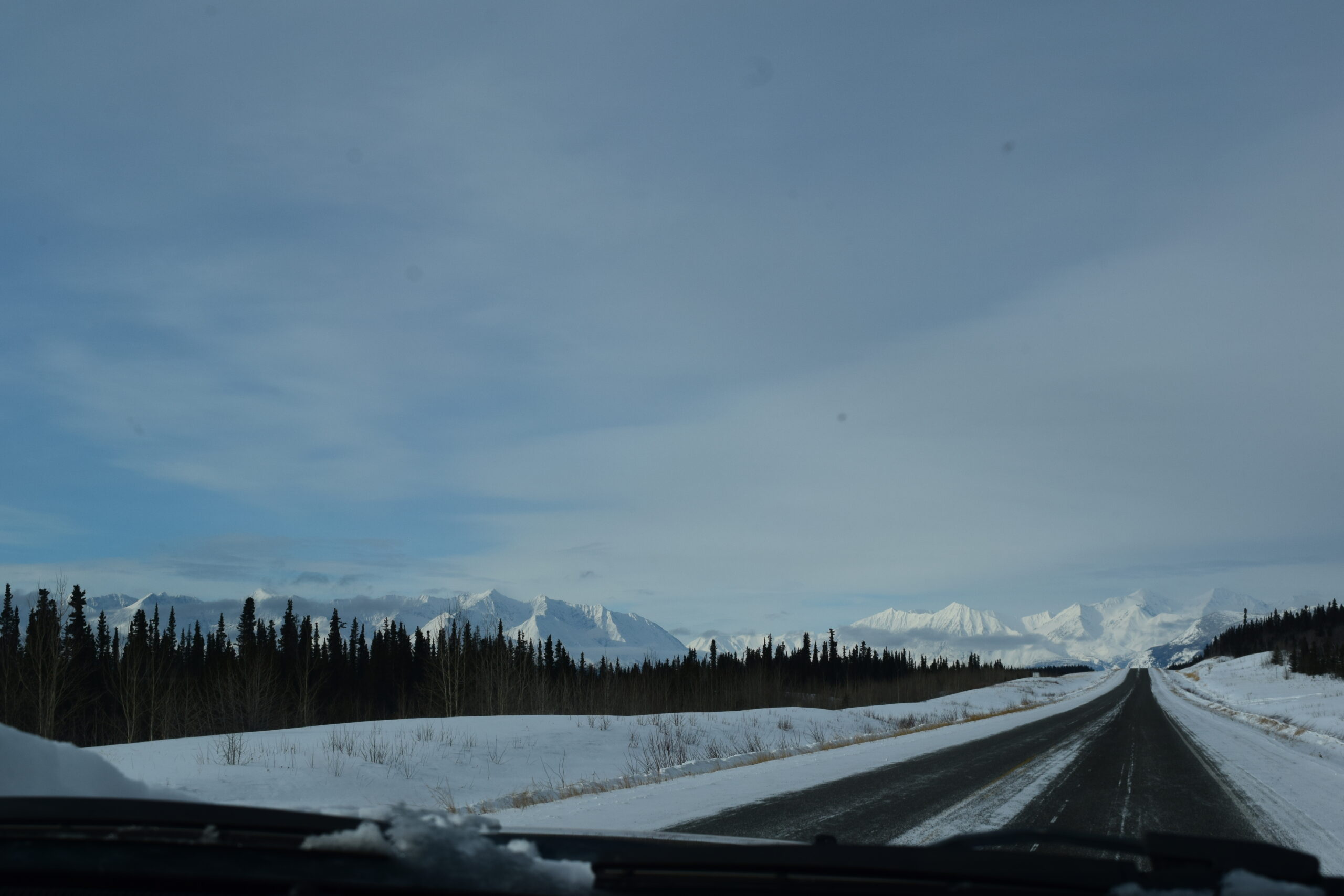
There are lots of rest areas and wide spots to camp on along the highways unless it is the busy season. We were in “Quarantine” during the entire trip so they preferred that we camp out beside the road rather than going into motels where we would be around people. That was just fine with us as it saved over $500 on motel costs alone plus restaurant costs from meals we probably would have ordered. Just a word of advice, many of the RV parks say they are open year-round when they definitely are not so call ahead if you have a phone that works. You definitely need to buy the “Milepost” book before making the trip as it lists services and attractions at each mile of each highway you use to get to the Alaska Highway along with the Alaska Highway itself.
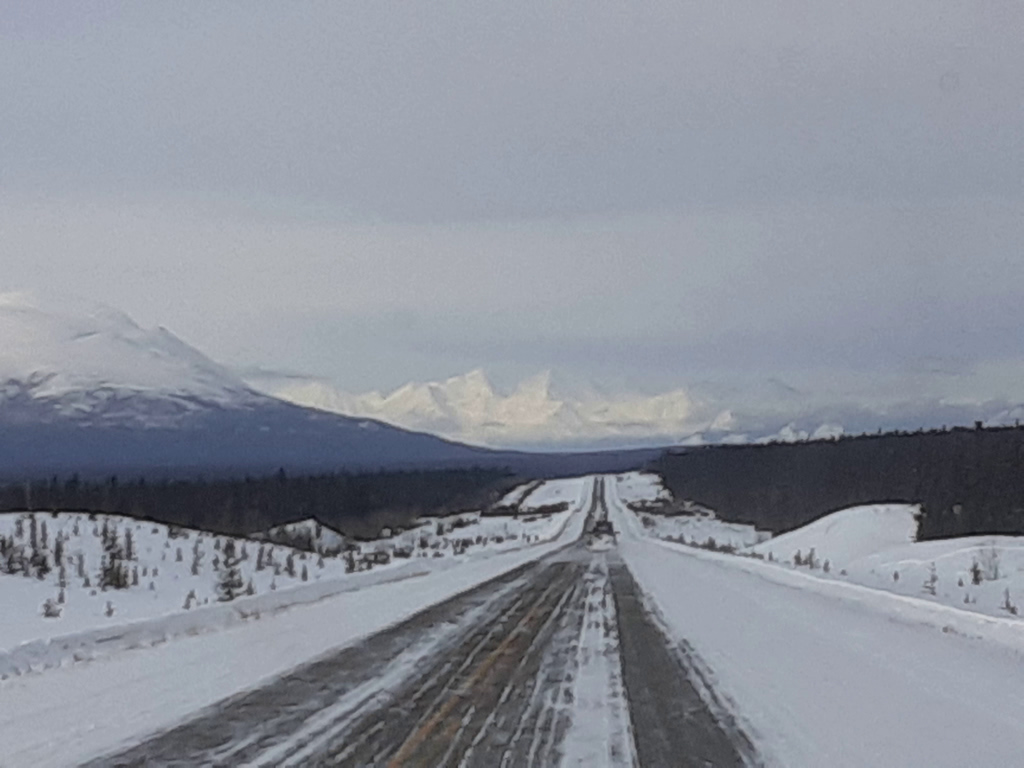
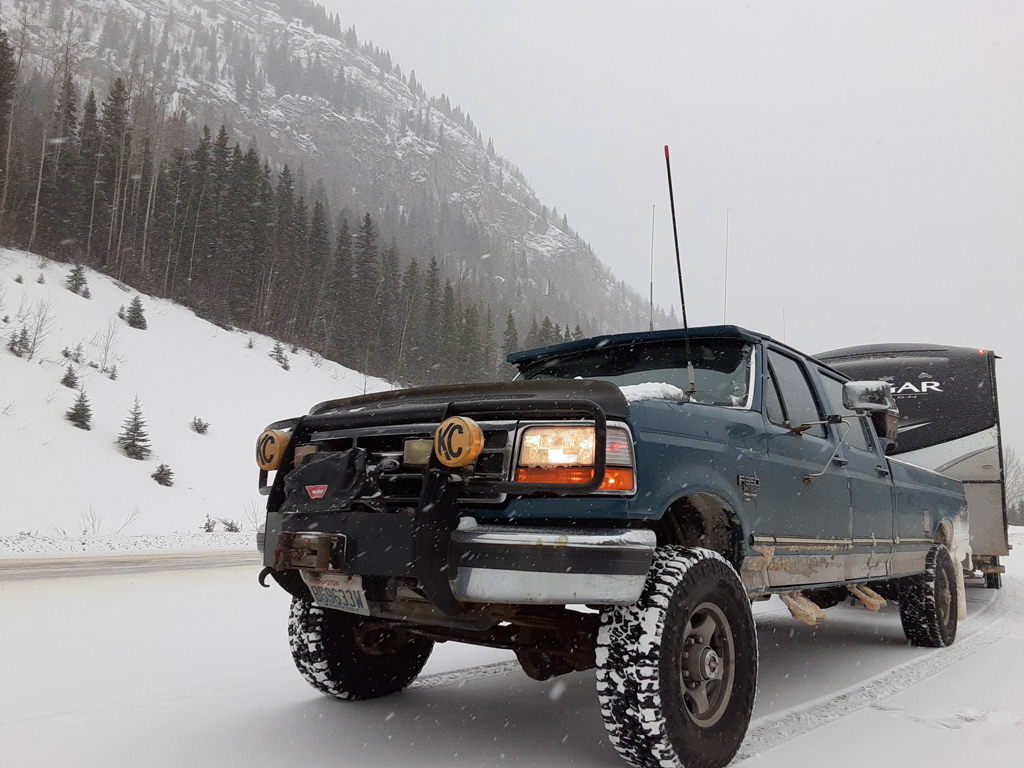
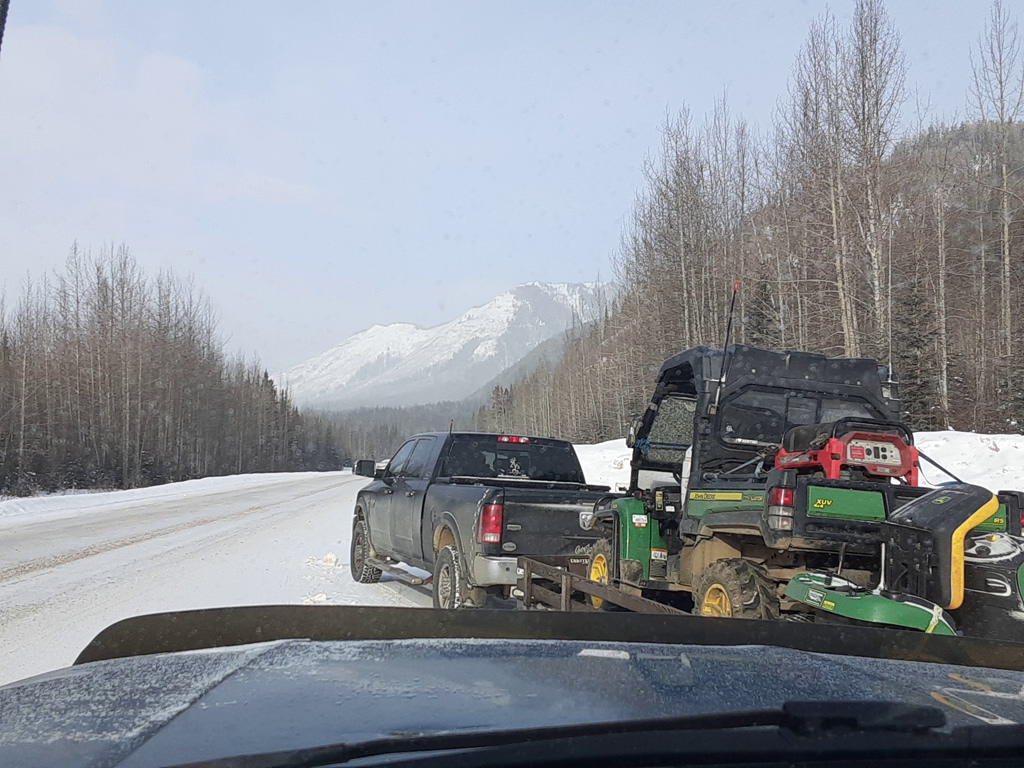
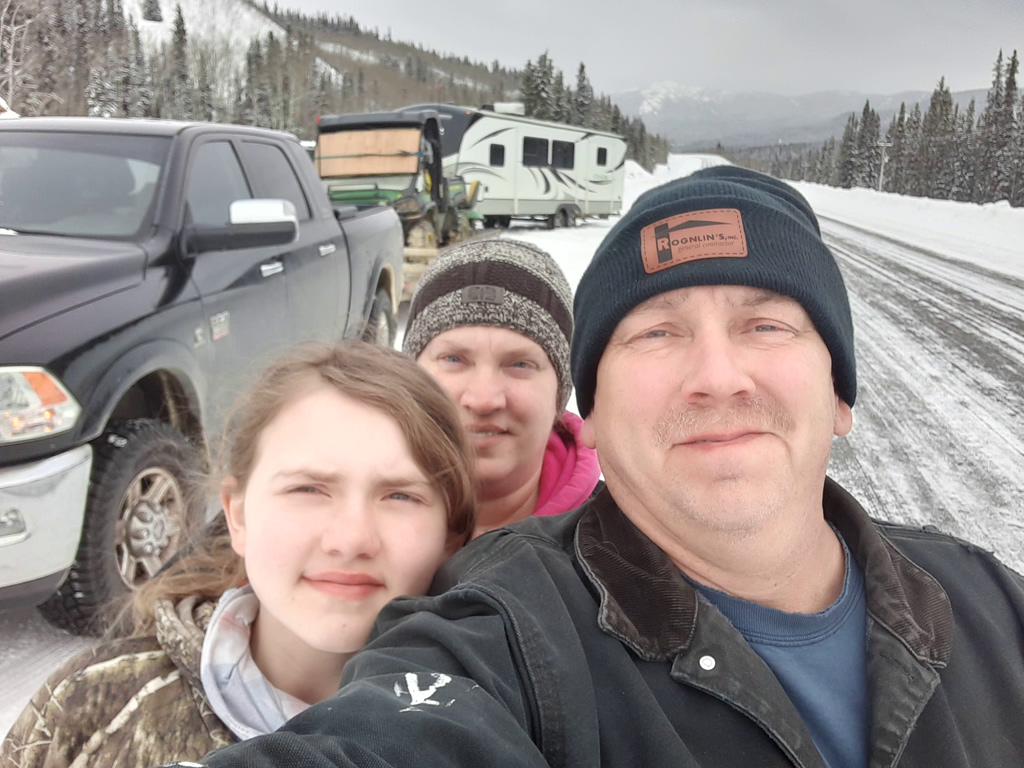
We were able to Cross into the Yukon and start down the Alaskan Highway at its beginning in Dawson City. We would have taken a photo of ourselves by the sign had it not been a “Tourist” thing to do. The roads began to be ice and snow covered the day before so it was slow going at about 45 miles per hour most of the time. We continued on trying to make Fort Nelson by dark as there was too much wildlife in the area to chance driving the highway in the dark.
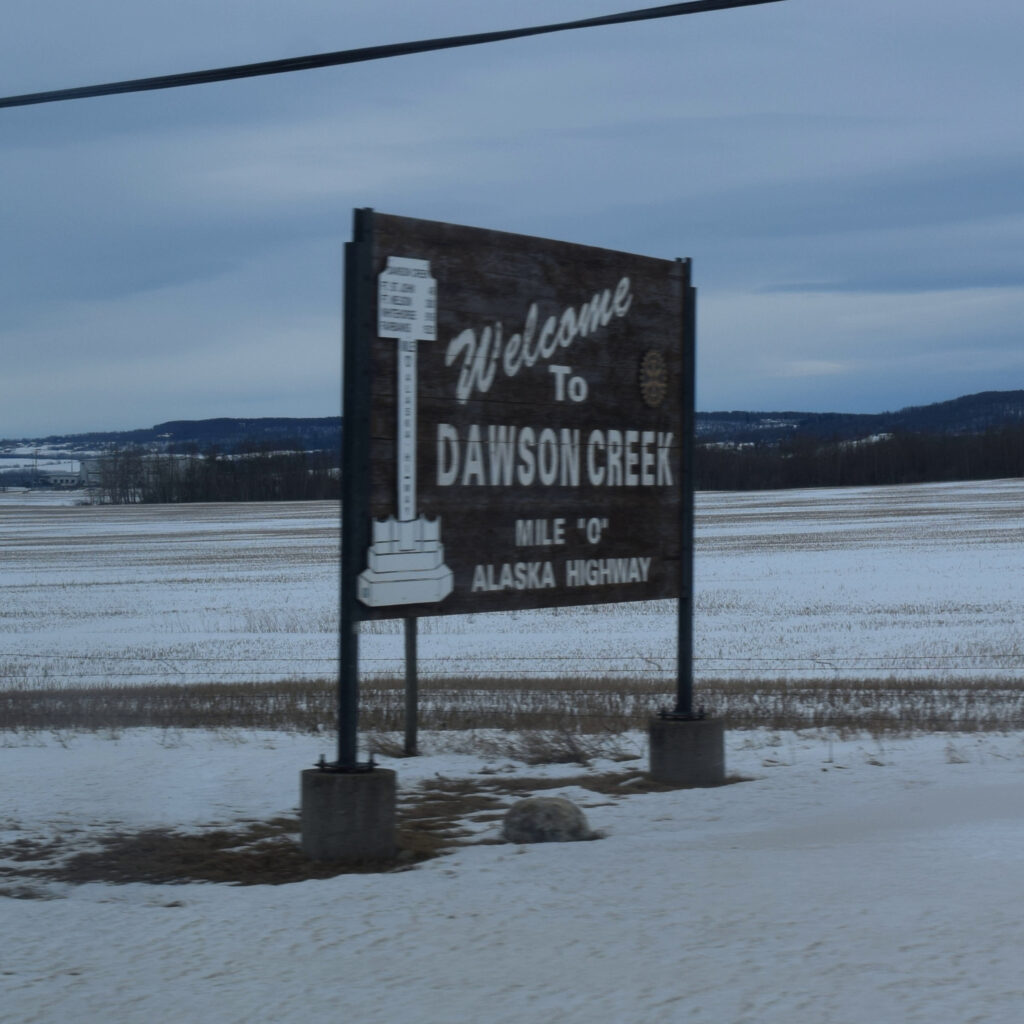
We did some research beforehand and found that the Yukon Amateur Radio Association had several repeaters that covered most of the highway through the Yukon so we were able to reach people on their system. We used 146.520 Simplex all the way through Canada and talked to a few people who were very helpful with helping us find stops along the way. Many were surprised to hear United States call signs at that time of the year and probably thought we were probably a little crazy driving through the Yukon at the end of winter.
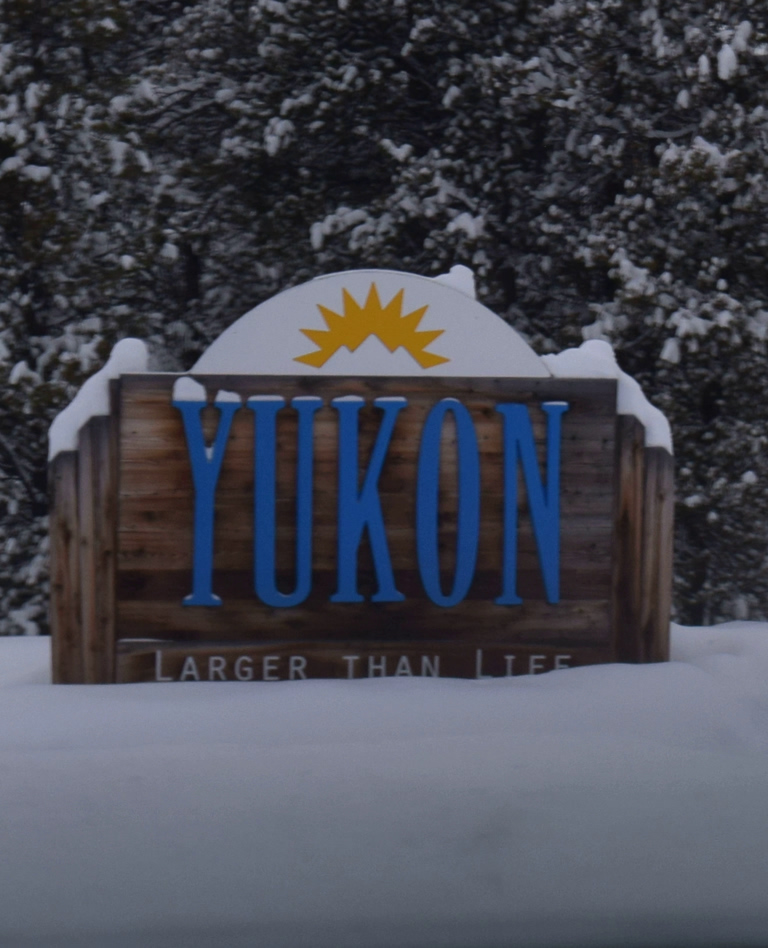
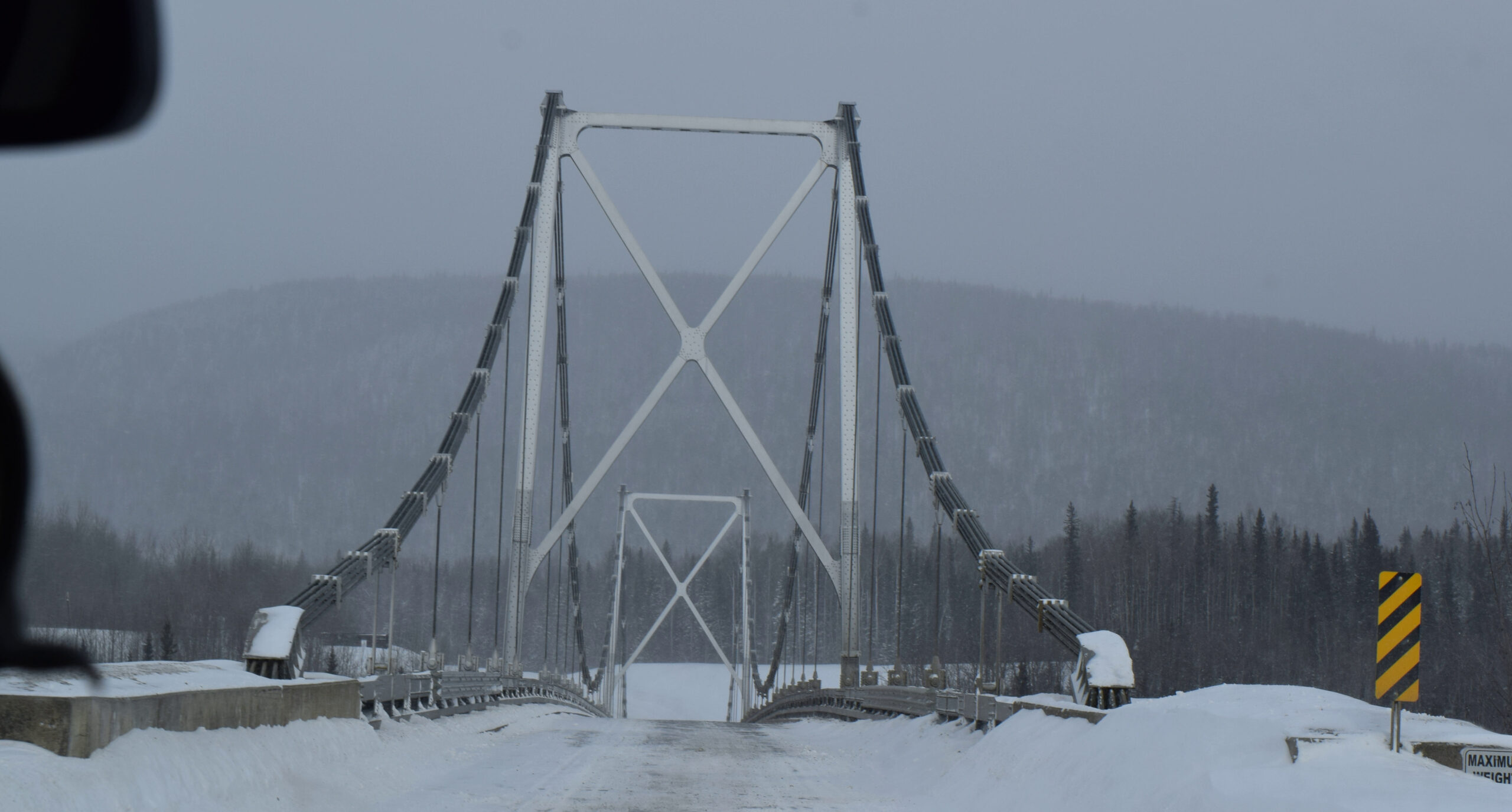
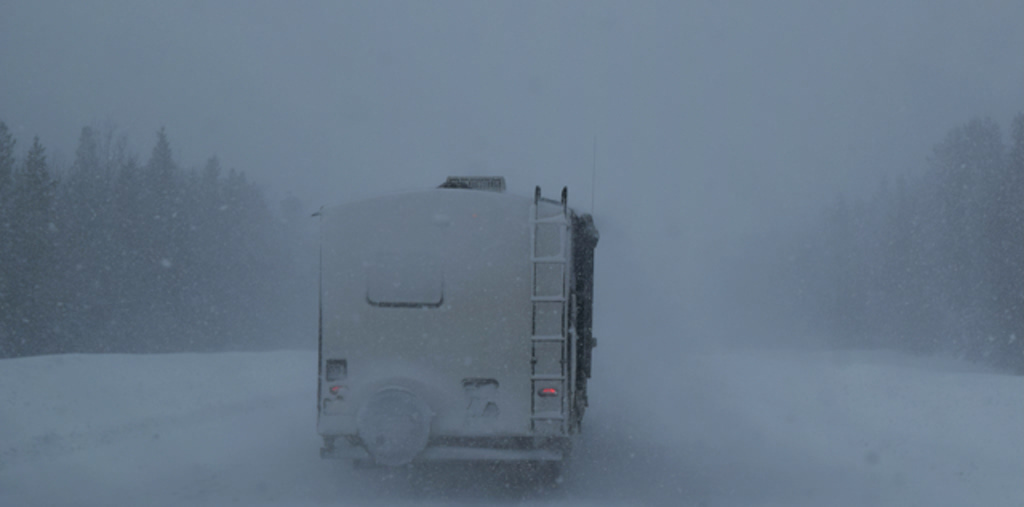

It started snowing heavily as we headed to Watson Lake and we were lucky enough to get stuck behind a snow plow so we were slowed down substantially, but the road was clear. There were a few towns in between that had a few basic services and this is definitely an area that you would never want to break down or get stuck in. We put new tires on both pickups before we left so they did great. The car trailer had newer good tires already, but the camp trailer still had the cheap factory tires on it so it got a little squirrelly on occasion. I would spend the extra to replace those tires if I had to do it again, but they were virtually new tires with only a few thousand miles on them so I didn’t.
The only RV park that said it was open in Watson Lake was covered with three-feet of snow so their website and the milepost book was off on that one too. None of the motels had trailer friendly parking for two pickups with trailers as we were hoping to get a motel room as the temperature had dropped to -10° Fahrenheit. Our winter package trailer worked good until about 10° and then some of the waterlines in the bathroom started freezing so we were hoping for a hot shower in the morning. The heater kept it warm inside, but the waterlines under the floor did not stay warm enough. We ended up finding a wide spot in the road and camping out for the night anyway without running water. We put our generator in back of the Gator which was on the car trailer just in case we needed it for times like this. Both our trucks are diesels so plugging them in is a must when temperatures get below zero so I fired up the generator to keep the trucks warm. We woke up to fresh snow and -16°F so I was glad we thought ahead on that one. I did have to climb on top of the trailer and sweep the snow off with a broom so we could bring the slide outs back in and fully close. The tank heaters did not keep up with those temperatures so all of our water and holding tanks froze solid overnight, but we stayed warm and cozy inside.
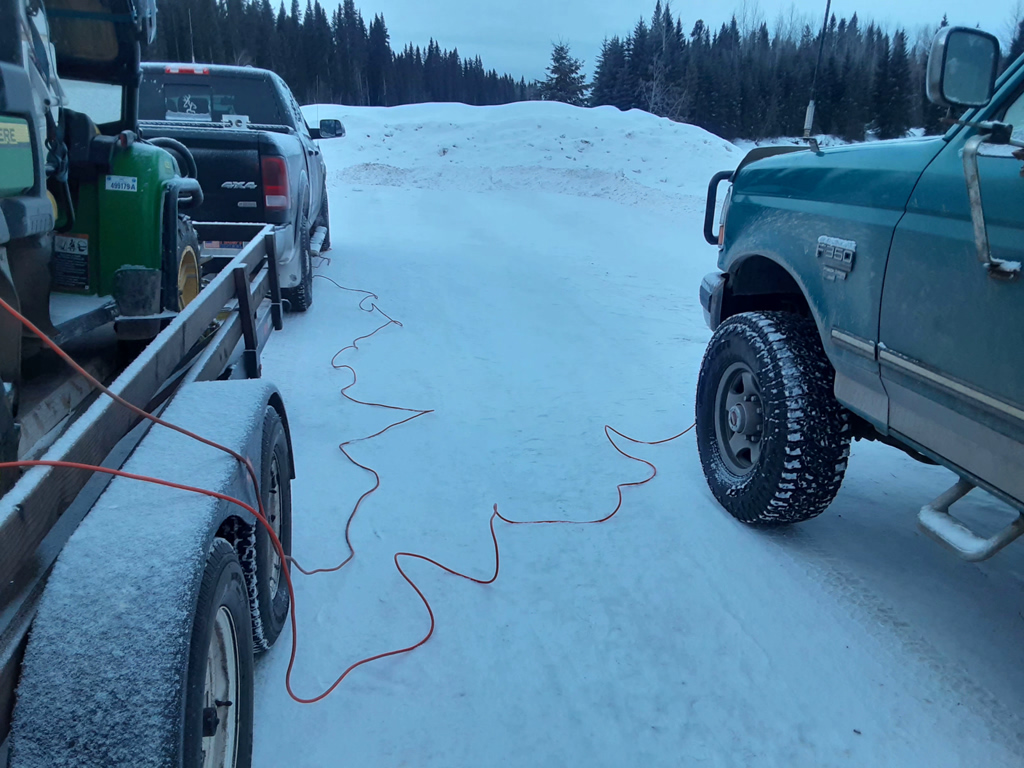
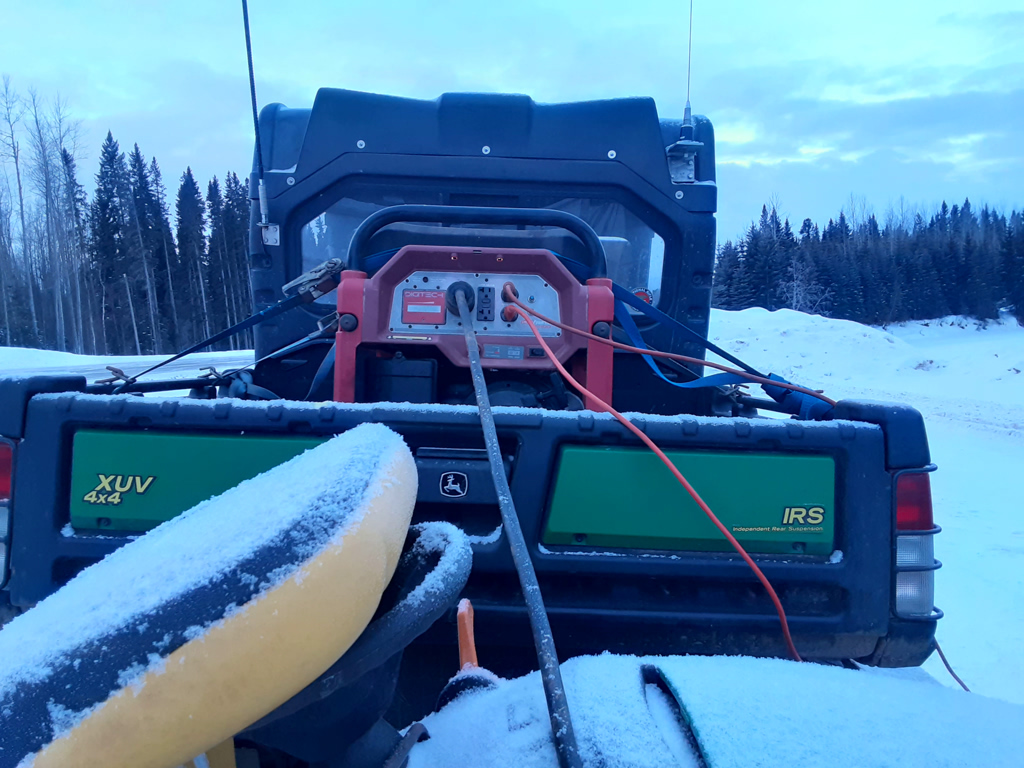
After getting back on the road we ran across a stranded motorist with a blown tire and no jack. Nobody stopped to help apparently so he was thankful to see us stop and was especially grateful that I had a floor jack and impact gun. You would think that more people would stop to help seeing that breakdowns could be life and death situations in those temperatures, but they didn’t. The driver was from New Mexico and headed to Alaska so we were not the only crazy people towing trailers across the frozen Yukon.
The area between Watson Lake and Whitehorse has tons of wildlife and there were Bison all over the road through this section. Everyone’s advice not to drive this at night was very good advice and I could only imagine seeing a Bison walk out onto the frozen road a few feet in front of you at night. It would not be fun at all. We had made plans on how far to go each day, but all those plans went out the window quickly with each patch of compact ice-covered highway. We were on a mission to get through and out of Canada as quickly as possible so we were pushing ourselves as fast as we safely could. The people in the Yukon were way more friendly than the people in British Columbia as they didn’t treat us like unclean second-class trespassing lepper citizens for the most part and were just as normal as rural Washington people. That was a welcome change after a few days in British Columbia.
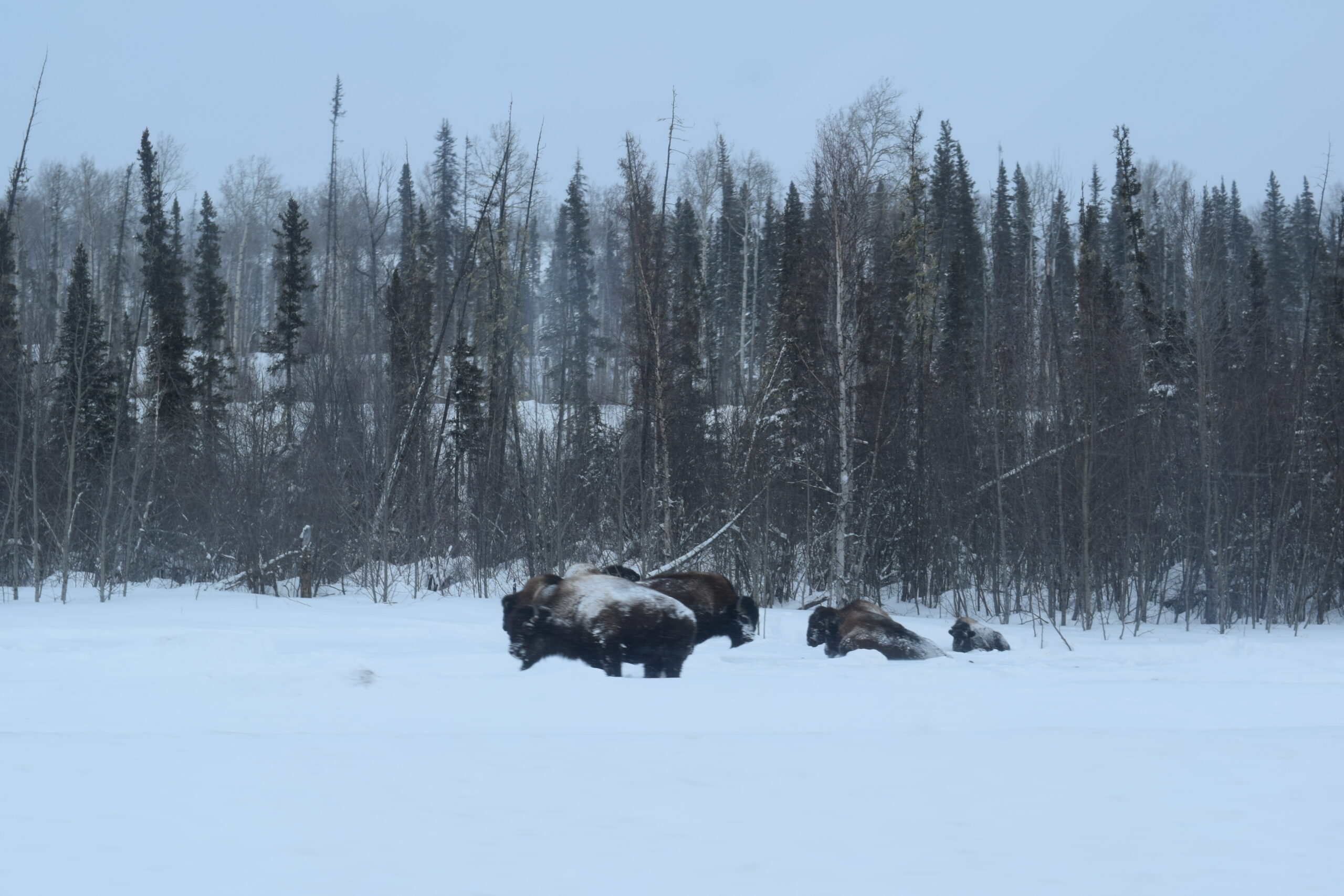
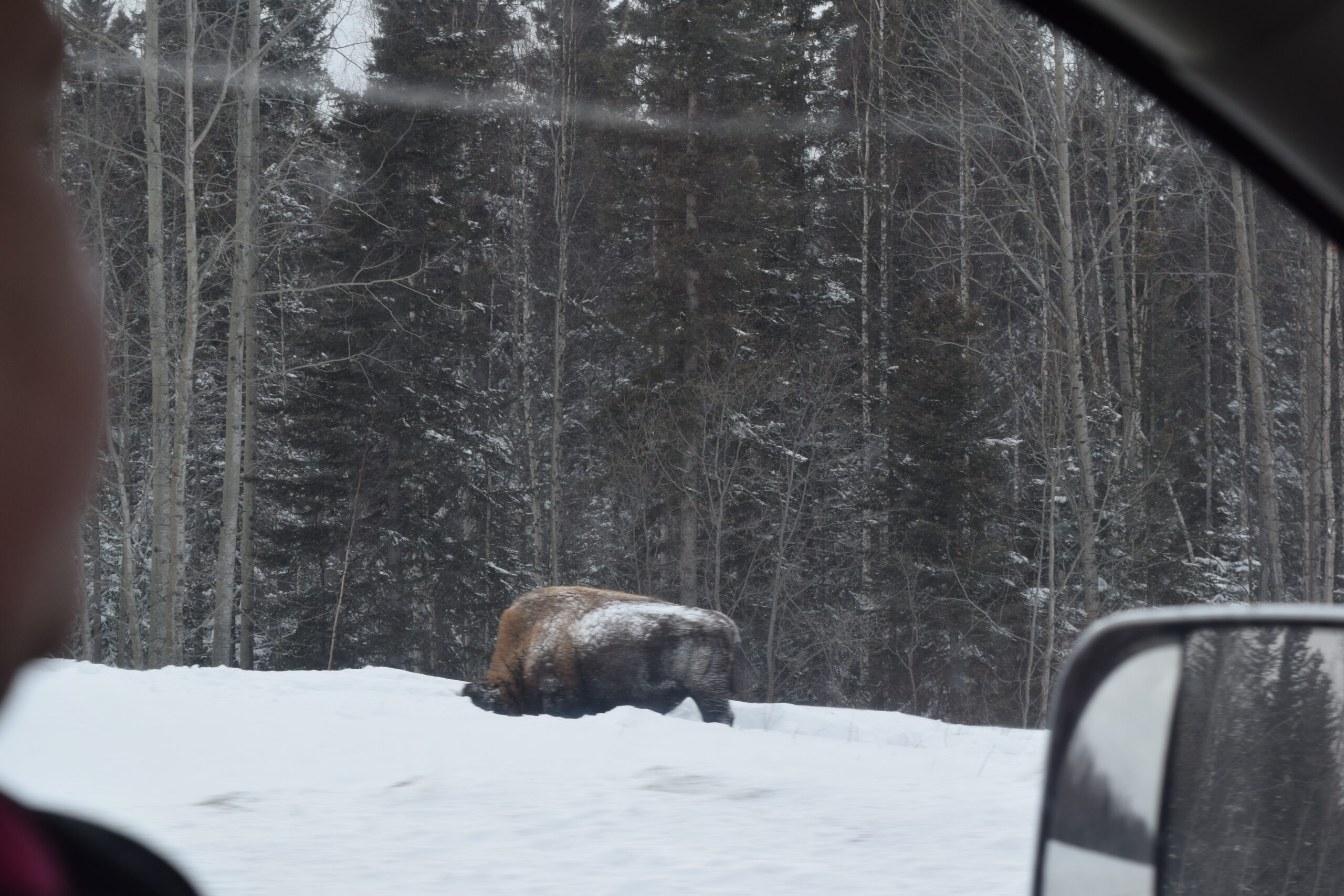
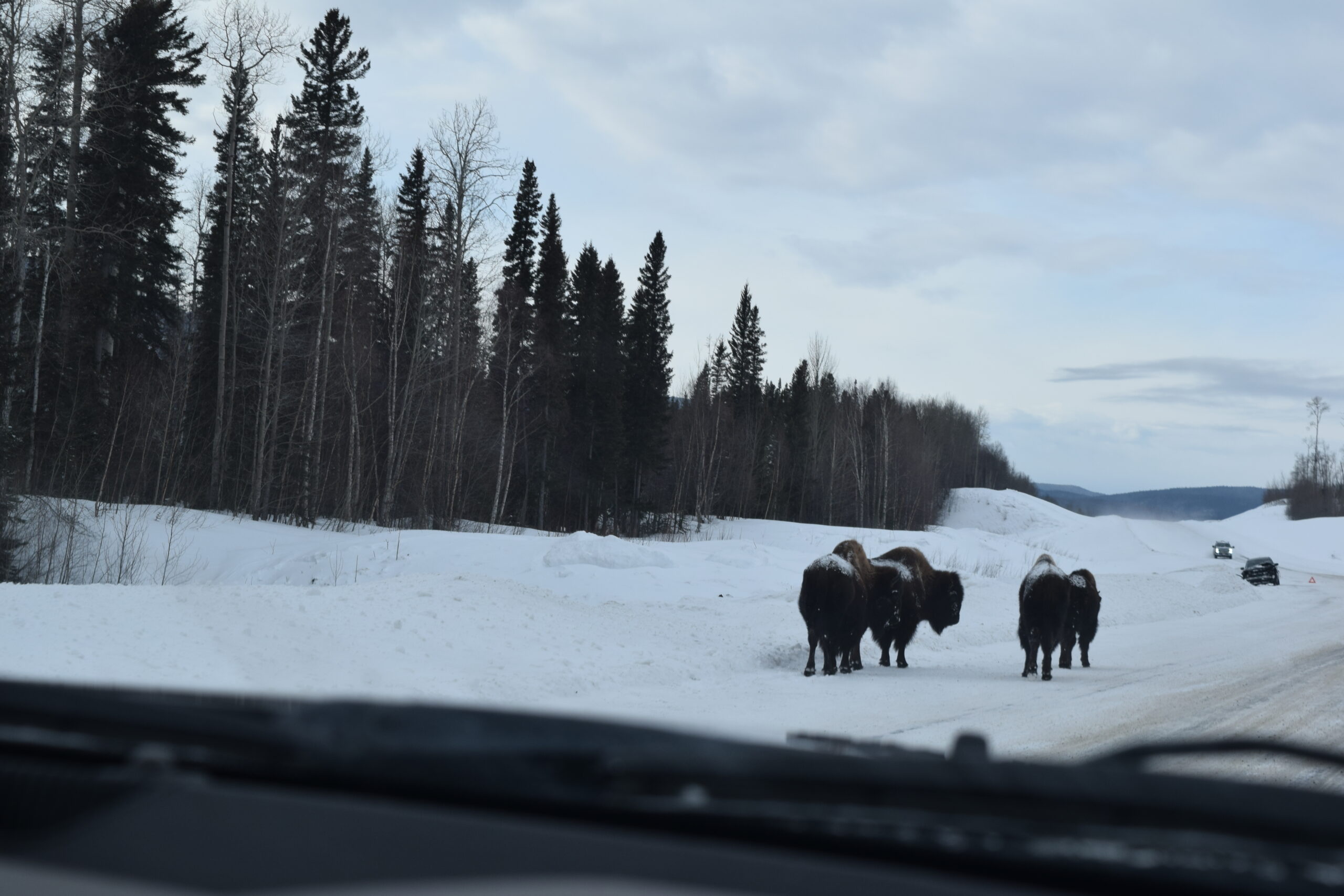

Most of the drive through the Yukon had beautiful scenery and was by far the most scenic and relaxing part of our journey so far. I’m sure that people being friendly to us again probably helped with the relaxation too. There were lots of mountains, rivers, and other outdoor stuff that we love so we also felt way more at home. We were very blessed in this part of the journey as all the major snowstorms were either ahead of or behind us so it was relatively smooth sailing most of the time. We only caught the tail end of one snowstorm and we followed the snow plow through the worst part of it. Had we had left on our scheduled leave day we would have been snowed in and stuck so there was a reason for all the delays we had.
We called it a night at an RV park just outside of Whitehorse so we could have inside showers in the morning. It wasn’t dark yet, but the next stretch of highway also had to be driven in the daylight so we didn’t chance going any further. It was a nice relaxing night and we got laundry caught up at the laundromat there. This was our first peaceful night’s sleep since we entered Canada as we did not have to worry about a car sliding into us on the ice alongside the highway plus, we didn’t have to worry about generators or frozen waterlines.
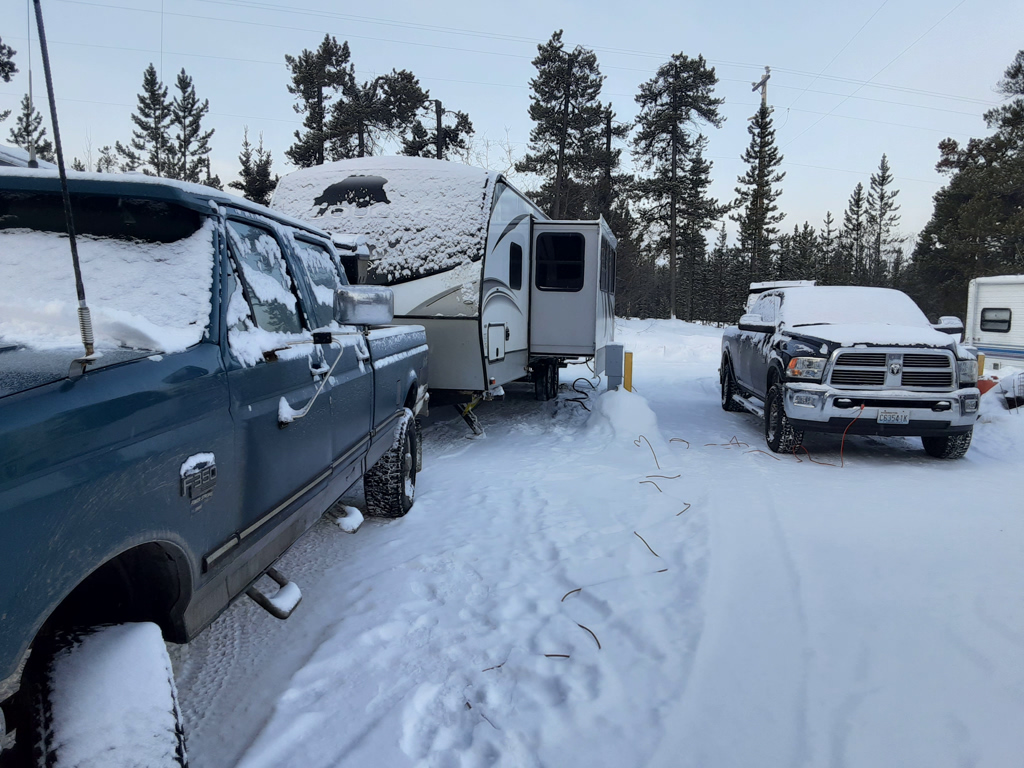
We were passed by many trucks or cars with trailers that had California and other state plates on them as we were slowly making our way down the icy roads over the past couple of days so we always slowed down to let them around us as soon as we could. Hannah didn’t have any trailer towing experience on ice so we did not push it and those other people were driving way faster than I would ever drive in those conditions so I was curious to see how far those people would make it going over 60 MPH on ice towing trailers. Inevitably we saw many of those same rigs further down the road either off the roadway in the ditch or sitting on top of a snowbank along side the road so we ended up getting there way before they did. We passed the one truck with a big camp trailer that must have been doing over 70 MPH sitting over the top of a 5-foot snowbank along the highway so they didn’t slow down much to bounce the truck and trailer that far over a high bank. Ironically, they would later pull into Tok just behind us so they had to wait a day to get towed out.
Our final day of the journey was from Whitehorse to Tok Alaska and we couldn’t wait to get back to freedom again. Whitehorse was a larger town and had museums and other attractions that we really wanted to see, but couldn’t. There would have been many things to do there and who knows, we may go back if pure bloods are ever allowed to enter the country and do stuff again in the future. I doubt it will happen, but you never know. We were disappointed in that aspect as it was a trip of lifetime and our travel was so restricted that we couldn’t check things out along the way. The plus side is that we did save lots of money by not stopping so that saved us lots of dollars. Diesel was about $7 Canadian per gallon so any way of saving money was nice.
The final day had even more scenery and we finally acclimated to the cold temperatures somewhat as we felt fairly warm at 10°. Of course, going from -20° to 10° is a sizeable warmup and reasonably warm by Yukon standards. We stopped at the Canadian Customs at Beaver Creek to turn in our travel papers and placards as required before continuing on. We had to be accounted for and check in daily while in Canada so we had to check out upon leaving. They gave us 7 days to leave Canada instead of the usual five days as we were towing trailers and heavy snow was expected along our route. The Alaska border was just down the road from there so it was smooth sailing the rest of the way and we were happy to reach Free America and lose the muzzles for good. Canada also required us to wear muzzles any time we stepped out of the car so we felt like burning those as soon as we crossed the border. Getting back into the US in Alaska was way easier as we didn’t stop anywhere or get anything to declare.
Overall it was a good experience and Hannah is much more comfortable driving on ice now and pulling a trailer. I am thankful to have made it all the way with no major issues or breakdowns. We are looking forward to starting our new life here in Alaska and sharing it with all of you.
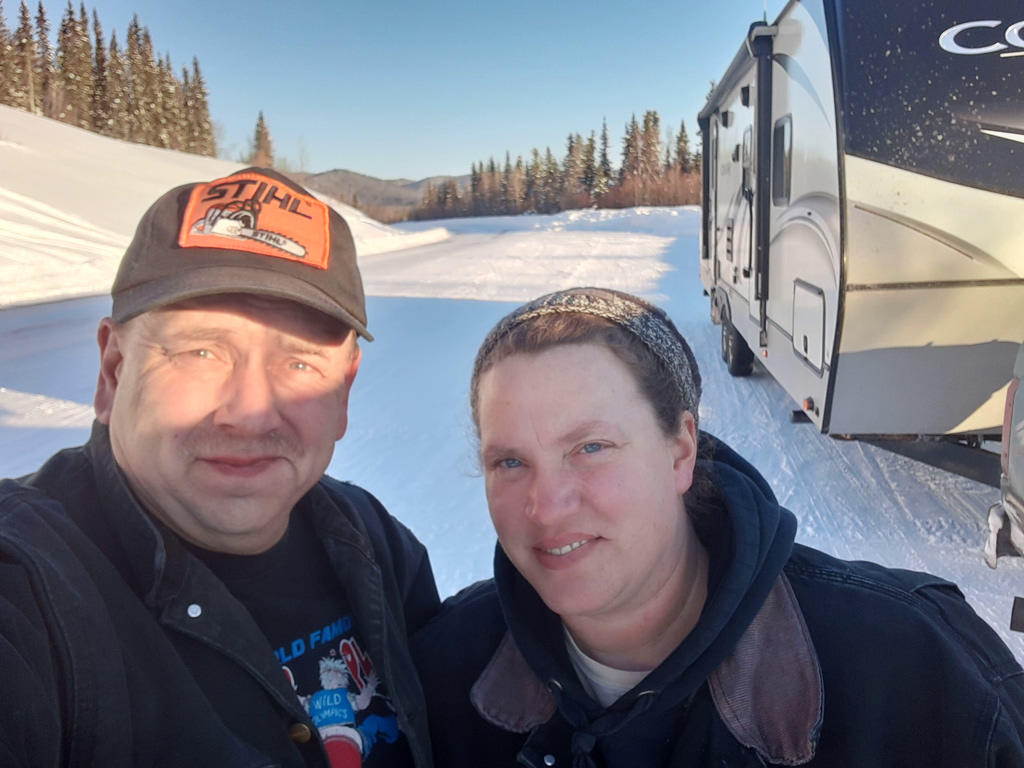

What an ordeal, beautiful scenery and journey, love the read. I would of never took you guys for lepers, but it kept it entertaining. I love Kimber’s story and will check it out. You guys stay safe, always in my thoughts and prayers ❤️ 🙏
Miss you Chris! you’ll have to come up and visit sometime after we get a house!
Comment Well ol pard, Good luck up in cold, I was up there tow times 1985 and 1987, fished out of King Salmon, had to carry s to air misc. the big bugs were bigger the a 707, haha. going to miss one of the good guys of OLD DNR, but life goes on, nice story and pics, keep them coming all ways the ol treekop
Floyd Green
Thanks, we ran out of options and new Washington laws and taxes chased us out so it’ll be a fun adventure. The houses we are looking at have guest cabins on them so holler if you make it up here.
Good story Jared and Hannah. So glad you made it safely and intact. Keep me posted on any developments and continuation of your adventure.
Will do! Hoping to get moved into a house soon so the many projects, stories, and adventures can really start, lol.